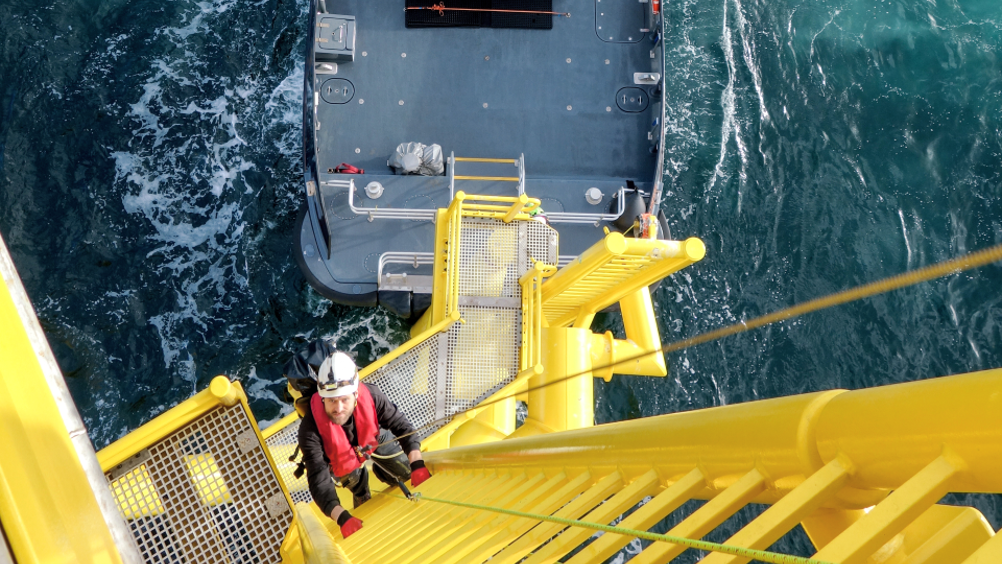Sponsored post: Undocking better boat landing designs for offshore wind turbines
Structural analysis helps an offshore engineering company design boat landings that withstand interactions with rough waters and 200-tonne vessels.

The sea churns, and a vessel is heaved back and forth as maintenance personnel approach an offshore wind turbine. The craft is pressed against the structure's specially designed boat landing, and the crew members begin to disembark. As they move from boat to turbine, a wave rolls the vessel away and then back toward crew members still on the lower section of the landing. Fortunately, disaster is averted as the steel fenders absorb the impact and the transfer proceeds safely.
Due to the relentless force of the sea, the vulnerability of personnel being transferred, and frequent interactions with weighty vessels, it is a given that boat landings have to be strong. Building up strength could involve adding steel, but without the right information to guide decisions, design engineers may end up adding material to pieces that do not actually need it, unnecessarily running up the final bill. Therefore, designing boat landings with an eye toward not only safety and strength but also an efficient use of materials is crucial to making offshore wind turbines operational.
Register now to continue reading
Thanks for visiting The Engineer. You’ve now reached your monthly limit of news stories. Register for free to unlock unlimited access to all of our news coverage, as well as premium content including opinion, in-depth features and special reports.
Benefits of registering
-
In-depth insights and coverage of key emerging trends
-
Unrestricted access to special reports throughout the year
-
Daily technology news delivered straight to your inbox










Water Sector Talent Exodus Could Cripple The Sector
Maybe if things are essential for the running of a country and we want to pay a fair price we should be running these utilities on a not for profit...